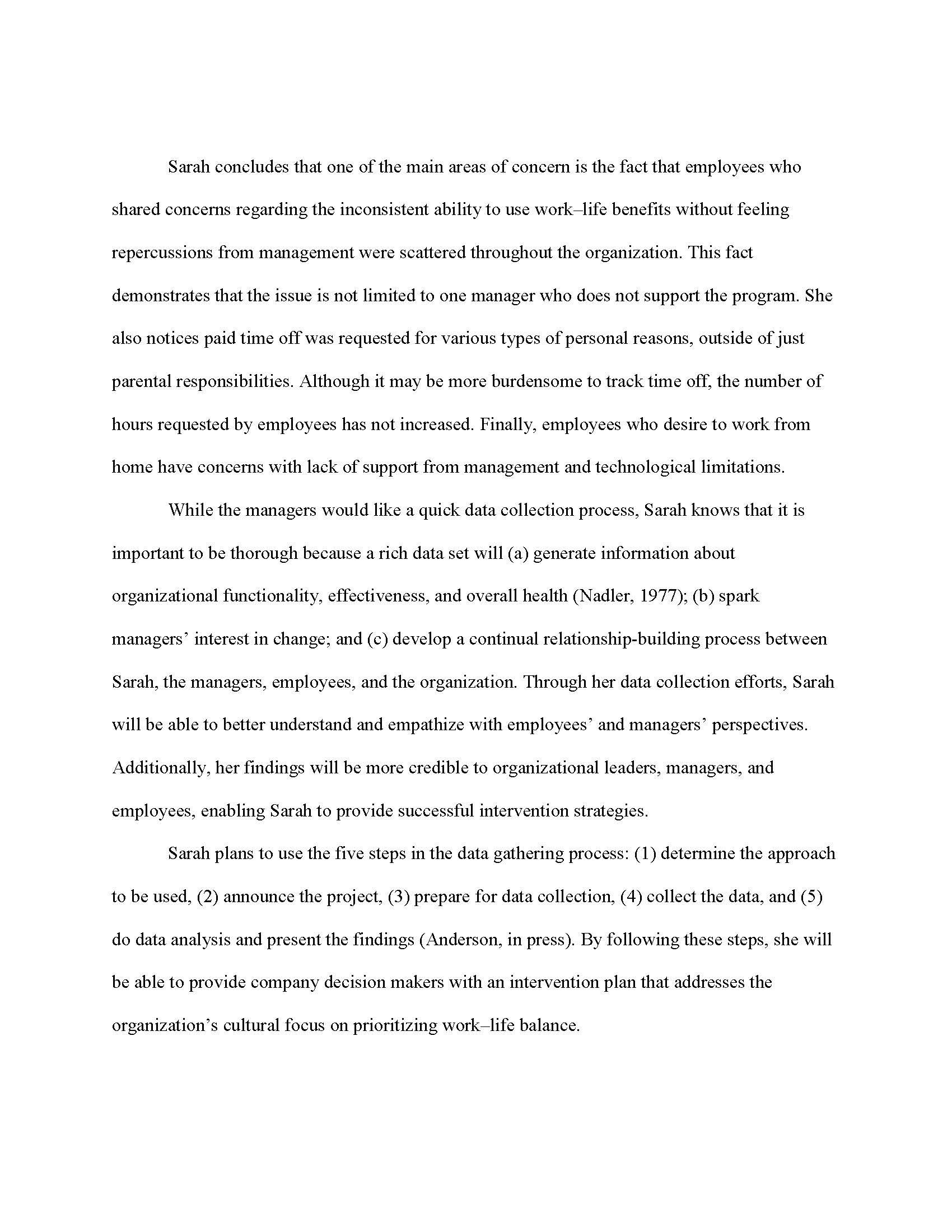Question
1. Review Chapter 7 - Data Gathering Evaluating the Fluidity of Work-Life Balance and answer the following questions: a. What three data gathering strategies would
1. Review Chapter 7 - Data Gathering Evaluating the Fluidity of Work-Life Balance and answer the following questions:
a. What three data gathering strategies would you recommend Sarah use given her need to collect detailed data within a short timeframe? Explain how your strategy would help her accomplish this goal.
b. Which strategies might help her best understand the unique needs of different groups of employees?
c. Once she has completed the data gathering, how should she analyze the information and present the results to the organizational leadership team?
d. What opportunities and challenges might Sarah encounter as she implements an organizational cultural change to embrace the work-life balance initiative?

Step by Step Solution
There are 3 Steps involved in it
Step: 1

Get Instant Access to Expert-Tailored Solutions
See step-by-step solutions with expert insights and AI powered tools for academic success
Step: 2

Step: 3

Ace Your Homework with AI
Get the answers you need in no time with our AI-driven, step-by-step assistance
Get Started


